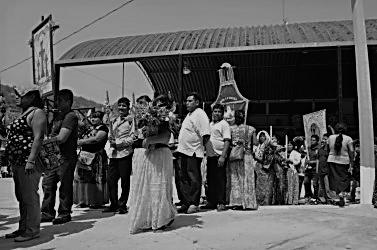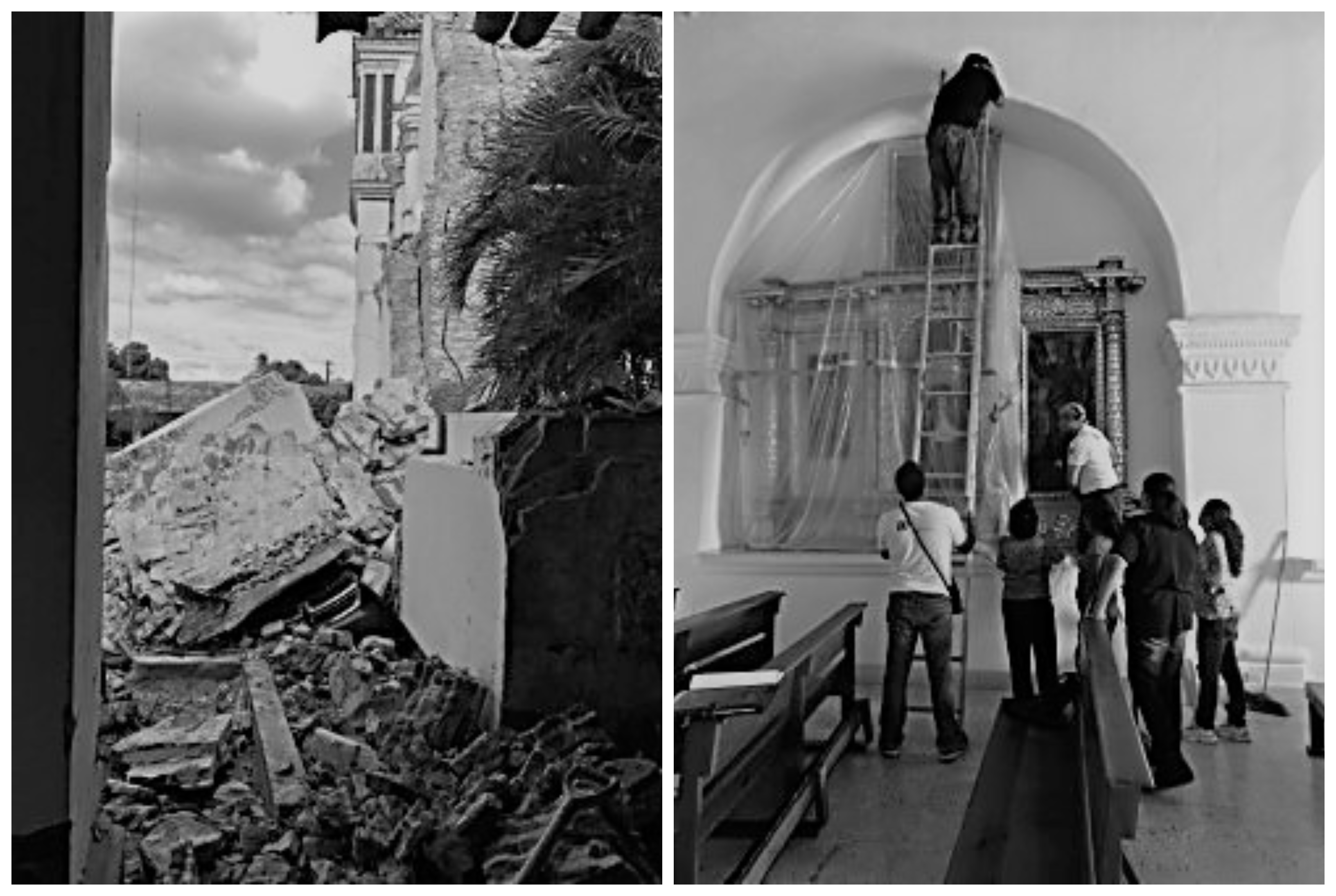Network Stories: Sofia Gonzalez
Describe your organization and the unique work that it is doing. Who and what are affected by the work? How does/will the work impact people’s lives?
In September 2017 there were two large earthquakes in Mexico. They damaged many buildings in cities and villages across 11 states in the south of the country, among them we have historical buildings, built between the 16th and 19th century. Most of which are churches, monasteries and religious edifications. Inside these buildings, heritage such as sculptures, murals, and paintings, were also affected by the earthquakes.
The National Institute of Anthropology and History (Instituto Nacional de Antropología e Historia) in Mexico is the institution in charge for the preservation and dissemination of the Mexican cultural heritage. In this sense is the executor for the conservation and reconstruction project of all the cultural heritage that was damaged of the earthquakes.
I started working in the conservation and reconstruction project of the historical edifications and cultural heritage affected by the earthquakes at the end of 2018, in the state of Oaxaca, one of the areas most damaged by the earthquakes. I began with a Conservator and Supervisor position and after six months I was promoted to Head Conservator in charge of the preservation of cultural objects and murals housed in around 200 churches. I plan, organize and execute projects for the conservation of oil and wall murals and sculptures in historical buildings. And I work together with architects, engineers, conservators and we have a close relationship with the stakeholders of the churches.
As a consequence of these earthquakes, the cultural landscape in a lot of villages was dramatically affected, changing the religious practices in the communities. For example, in some places, the churches are no longer safe, so the people have to pray and conduct all of their religious rituals in a new space outside the churches.
The reconstruction project has a great impact on the communities since it implies changing their rituals and religious practices because of the earthquakes. However, one of the goals of the project is to rebuild the churches and return to the religious daily life before the earthquakes.
Tell us about a project that has benefited from the training you received from us? Why was the project important? Was there anything unusual or surprising about the execution of this project?
This project requires the practice of planning, executing and controlling the work of a specific team to achieve goals in a specified time. The training I received from the Heritage Management Master’s program gave me these tools to face, solve and organized specific tasks.
The most surprising thing is to communicate with the stakeholders of the communities to achieve the project goals. Since the churches are not safe to celebrate mass inside doors. It is necessary to remove all the historical objects (like paintings, sculptures, bells, etc) from the inside to a safe place where this heritage is protected.
Some stakeholders are helpful and cooperate with the cause, however, others are very protective of their heritage and do not let the specialists participate so easily in these tasks. So, it is important to take a holistic approach with the stakeholders.
Has your organisation worked on any other projects that are innovative, globally significant and can be replicated in a local market?
Yes, the National Institute of Anthropology and History has worked on different projects to promote the Mexican heritage. Currently, there is a dissemination campaign in Oaxaca to promote and show all the restorations works carried on in edifications affected by the earthquakes, with an enormous presence on social media and radio.
What are the global issues that your project addresses (e.g., fighting climate change, preserving heritage and culture, promoting local participation,)?
The reconstruction of historical buildings and the heritage damaged by the earthquakes executed by the National Institute of Anthropology and History is a huge challenge because around 2000 historical buildings were damaged in the country. The institution needs human and economic resources.
Preserving religious heritage implies an approach by the specialists towards the communities. Many times, interdisciplinary work must be done with these communities to raise awareness about the importance of caring for and preserving their cultural heritage and promoting local participation.



